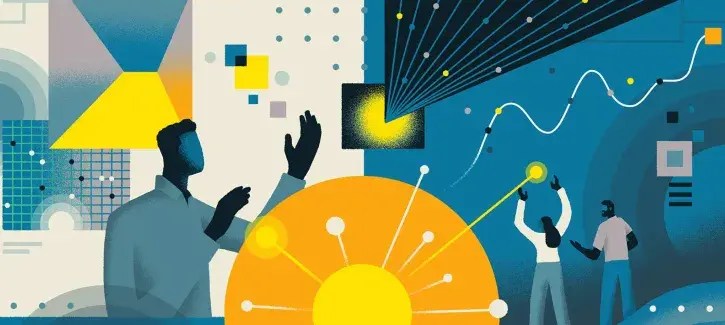
How to use AI to improve your life

You’re making Caesar salad dressing and ask Google for a good substitute for anchovies. You’re looking for the quickest route to your destination, and your maps app provides it — with live traffic and construction updates (along with a list of speed traps!). You’re enjoying a streaming service, and it suggests new musical artists based on your listening history. That’s all AI in action.
AI, like love, is all around.
While definitions of “intelligence” vary, in January, the Vatican released a document (Antiqua et Nova) defining it as an “essential aspect of how humans are created ‘in the image of God.’” AI, on the other hand, functions “as an advanced computational tool that excels in pattern recognition and data processing,” says Steven Fernandes, PhD, assistant professor of computer science. It augments human effort and enhances our capabilities; it doesn’t replace human intellect. It cannot emulate human consciousness or emotional depth, Fernandes says.
But it can “boost productivity by automating routine tasks and enabling quicker, data-driven decisions,” he says, such as generating a meeting summary.
AI finds patterns the human mind cannot. It is also unencumbered by life experiences and human biases, though they are trained on data that includes such human experiences and biases, which can be problematic, says Creighton’s university librarian Michael Paulus, DMin, author of two books on AI, most recently, AI and the Apocalyptic Imagination: Artificial Agency and Human Hope. Because it can make predictions rooted in historical data, it is a powerful planning tool, allowing us to better anticipate and shape the future, he says. “Humans can imagine alternative futures; AI can present probable futures.”
Lindsay Iverson, BSN’05, MS’09, DNP’11, adult acute care nurse practitioner and director of the Clinical and Simulated Learning Environment at Creighton, says AI has freed healthcare professionals from time-consuming administrative tasks, allowing them to connect more deeply with patients. For instance, AI can weigh factors such as the number of patients and seasonal trends to accurately predict how many nurses and techs are needed for hospital shifts, leading to better patient care.
“AI can help health professionals predict illnesses, personalize treatments and even make care more accessible in rural areas,” Iverson explains. It’s their “partner in progress.”
For parents, AI can encourage creativity and critical thinking. When parents should introduce their children to AI depends on their developmental stage and ability to understand technology, says Jean Hearn, EdD’16, associate professor in elementary education. For preschoolers, appropriate AI-powered educational tools, such as interactive storybooks, are a suitable start. Children as young as 7 can differentiate between human intelligence and machine capabilities, so discussions on how AI influences daily living (such as smart home devices) and responsible use of AI are fitting.
No matter when and how parents introduce AI to their children, Hearn advises they remain active participants in this interaction and moderate exposure with other means of exploration. “Parents should approach AI with a balanced mindset — embracing its potential while being mindful of its limitations and ensuring their children develop a critical and ethical understanding of technology.”
Yes, AI has limitations. It can “hallucinate,” meaning provide mistaken, misleading or made-up answers to prompts. And for platforms such as ChatGPT that pull content from across the internet, the information it yields is only as good as the source content.
But, Paulus believes, the AI revolution is a hopeful one that we needn’t fear: “We can engage with this technology reflectively and responsibly.”




